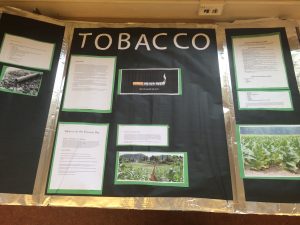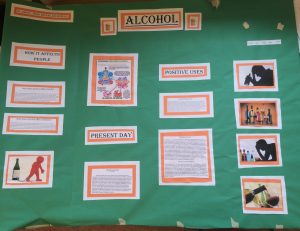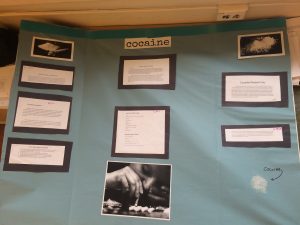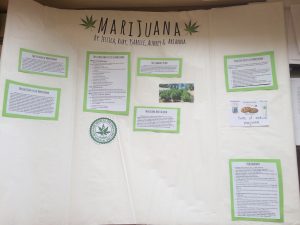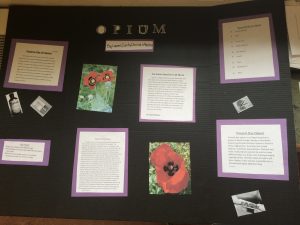For HACE I taught a unit on substance abuse. I assigned the students a group research project where they had to learn about one drug, in-depth, and then present a poster-board to the class. They had to teach their peers what they had learned, while the students filled in a note-taking sheet. Groups had to cover: the history of the drug; the science behind how it effects the bodies of adults and of children; the present day use of the drug; and if there are any positive uses of the drug, explain what they are. I wanted to promote drug literacy and provide an education about drugs that included multiple perspectives.
I started the unit by having students tell me every word they had heard of that had to do with drugs. Once they were all on the board we talked about how most of them didn’t actually know what most of the words truly meant. I encouraged students, as I did with all my units, to think critically about what they see and what they hear. During research, I taught students to decipher which websites were reliable sources of information. As with any subject, I wanted students to be armed with knowledge about substance abuse, but also ways of decoding the ways in which perspective and bias affect the way knowledge is presented. What is true and what is not? How does what we hear about certain drugs affect how we think about people who are addicted to them? Is every drug addict living on the street? Although we had minimal time for this unit, I believe students got a lot out of the project, both in terms of knowledge about substance abuse and, also, thinking critically.
